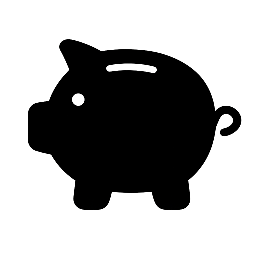Let’s be real for a second — we all have ideas.
Ideas that pop up while you’re in the shower.
Ideas that come to you right before sleep.
Ideas that make you say, “Wow, someone should totally do this.”
But here’s the problem: most people never become that “someone.”
They let ideas fade away because they don’t know where to start… or because they’re scared it won’t work.
If that’s you — I get it. I was there once too.
Until I learned how to turn thoughts into income.
And in this post, I’ll show you exactly how to do it — even if you don’t have money, experience, or a big following.
Step 1: Capture Every Idea (Yes, Even the Weird Ones)
The first step is to respect your ideas.
I used to think I’d remember my best thoughts — but I never did.
Now, I write everything down. Notes app. Voice memo. Sticky note. Doesn’t matter.
Because your mind is not a storage unit; it’s a creative machine.
And sometimes, the idea that sounds crazy today becomes your biggest opportunity tomorrow.
For example, someone once thought, “What if we rented out air mattresses to travelers?”
That “dumb idea” became Airbnb.
So, rule number one: save it before you judge it.
Step 2: Validate Before You Build
Not every idea should become a business — and that’s okay.
The goal isn’t to chase every idea, but to test which ones have real potential.
Here’s how I validate mine:
• Search demand: I use Google Trends or Etsy to see if people are already searching for it.
• Audience pain: I ask, “Does this solve a real problem?”
• Profit potential: Can someone pay for this idea, not just like it?
If the answer to all three is yes — congratulations, you’ve got your seed.
Step 3: Turn It Into Something People Can Buy
Ideas become income only when you package them.
Let’s say your idea is helping people stay consistent with goals.
You can turn that into:
• A digital planner template
• A mini-course
• A Notion dashboard
• A motivational eBook
• A private accountability group
It doesn’t have to be perfect — it just has to be real.
Even a simple $5 product can prove your idea works.
Because $5 from one person means one thing: you created value.
Step 4: Use AI to Speed Up Creation
Here’s the part no one talks about:
AI didn’t take away opportunity — it multiplied it.
Now you can use:
• ChatGPT → to write outlines, descriptions, or even eBook drafts
• Canva → to design visuals and digital products
• Midjourney / Leonardo AI → to create unique illustrations
• Gumroad / Etsy / Payhip → to sell your product in minutes
You don’t need a team or a big budget anymore.
You just need execution.
AI is not your competition — it’s your collaborator.
Step 5: Share the Process, Not Just the Product
In 2025, transparency sells.
People don’t want to just see what you made — they want to see how you made it.
So document your journey.
Talk about the failures, the lessons, the little wins.
That’s how you build trust.
And trust = sales.
You don’t need to go viral — you just need to be real.
A 30-second TikTok or a simple Instagram post showing your idea in action can bring more attention than a paid ad.
Step 6: Monetize Authentically
You don’t need to be pushy to sell.
You just need to show people how your idea helps them.
Try this instead of the usual sales pitch:
“I created this because I needed it — and it changed the way I [do something]. If it helps me, it might help you too.”
That line converts better than any ad copy because it’s real.
People don’t buy products — they buy solutions from people they trust.
Step 7: Scale What Works
When something starts working, your job is to multiply it, not reinvent it.
If one eBook sells, turn it into a video course.
If one product gets traction, create a bundle.
If one topic gets engagement, build content around it.
This is how creators go from $100 a month to $1,000+.
You don’t need 100 ideas.
You need one great idea, executed 100 ways.
Step 8: Keep Your Momentum
Momentum matters more than motivation.
You won’t always feel inspired, but you can always stay consistent.
Even 30 minutes a day of progress keeps your idea alive.
Because the truth is — the world doesn’t pay for talent.
It pays for persistence.
The more you build, test, and share, the more your ideas will start paying you back.
Step 9: Remember Why You Started
Turning ideas into income isn’t just about money — it’s about freedom.
Freedom to create.
Freedom to work on your terms.
Freedom to build something that matters.
Your idea doesn’t have to be revolutionary. It just has to be real, useful, and consistent.
And when you combine creativity with courage — that’s when things start to shift.
Final Thoughts: Your Next Idea Could Be the One
Every successful entrepreneur, creator, and artist you admire… started with a single idea.
They just didn’t wait for permission to try it.
So the next time you get an idea, don’t say “someday.”
Say “today.”
Because you never know — your next random thought could be the one that changes your life

Leave a Reply